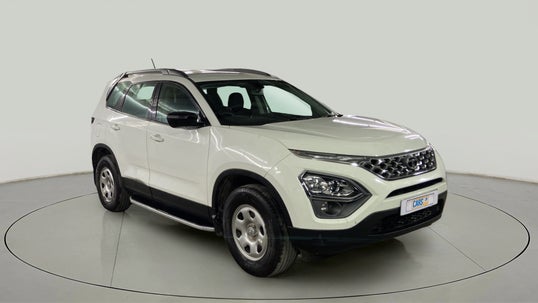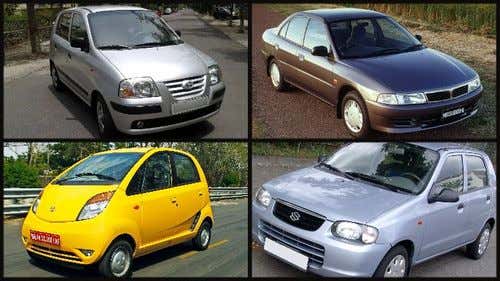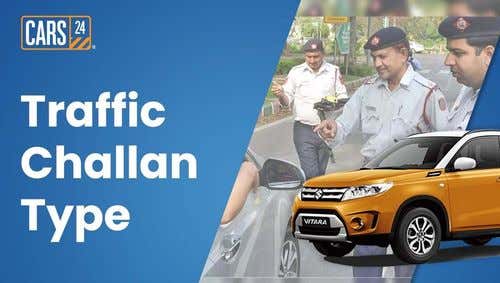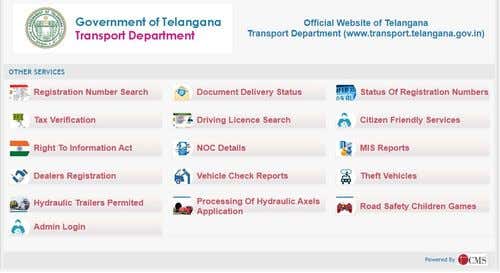New Safety Norms for Cars in India in 2024

Updated on: 24th January, 2024 IST
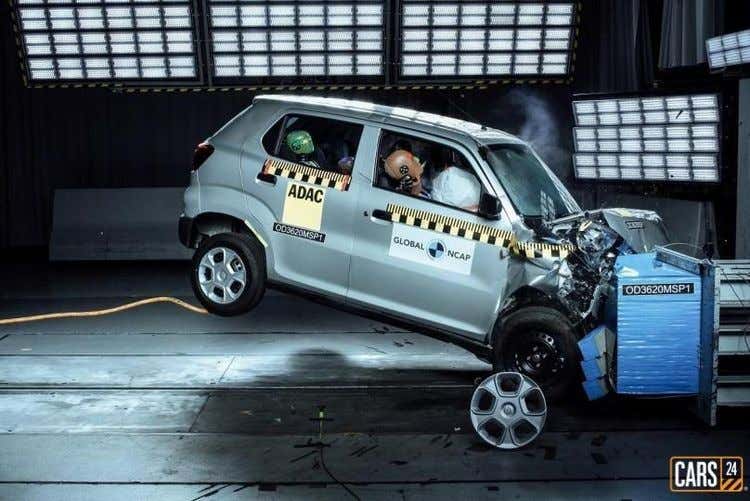
According to the latest data, road accidents in India claimed more than 1.5 lakh lives in 2019 alone. These numbers are alarming and it's high time we take action to make our roads safer. As we speed through 2024, the Indian automobile industry is set to welcome a wave of new safety norms for cars that will change the way we drive. The new safety norms are expected to reduce the number of accidents significantly in the coming years.
So fasten your seat belts, and get ready to experience a whole new level of driving with the latest safety norms for cars in India!
Table of Contents
- Overview of the New Safety Norms for Cars in India
- Timeline for Implementation
- Comparison with Previous Safety Norms
- Safety Regulations for Electric Vehicles
- Details of Mandatory Safety Features for Cars in India
- How These Safety Features Will Improve Safety on Indian Roads
- The Effect of New Safety Norms on the Indian Automobile Industry
- Challenges Faced by Manufacturers After the Introduction of the New Safety Norms
- Potential for Innovation And Growth After the Introduction of the New Safety Norms
- Importance of Consumer Awareness Of New Safety Norms
- Role of Government and Industry in Educating Consumers
- How to Ensure Compliance with New Safety Norms
- Road Safety Education and Why it is Important
- The Bottom Line
- FAQs:
Overview of the New Safety Norms for Cars in India
The Indian government has taken a significant step forward in improving road safety by announcing new safety norms for cars. These include the addition of advanced safety features that were not previously required and mandates that all cars sold in India must meet certain crash test standards, which is a significant improvement over the previous safety norms.
Here are some of the key safety features that are now mandatory under the new safety norms:
- Electronic Stability Control (ESC) to prevent skidding and loss of control
- Anti-Lock Braking System (ABS) to prevent wheel lockup and maintain steering control
- Airbags for driver and front passenger
- Reverse parking sensors and cameras
- Speed alert system
Read More : Road Safety Rules in India – Road Safety Tips
Timeline for Implementation
The new safety norms will be implemented in phases to give car manufacturers time to comply with the new regulations. The government has set a timeline for the implementation of the new safety norms, with different safety features becoming mandatory at different times. Here is a breakdown of the timeline:
- April 2021
The speed alert system and reverse parking sensors became mandatory for all new cars.
- June 2022
Electronic Stability Control (ESC) and driver-side airbags became mandatory for all new cars.
- June 2023
Passenger-side airbags, Anti-Lock Braking Systems (ABS), and seat belt reminders for both driver and front passenger will become mandatory for all new cars.
Read More : Traffic Signs in India – Road Safety Signs
Comparison with Previous Safety Norms
The previous safety norms in India were less stringent and did not require car manufacturers to include advanced safety features. The new safety norms are a significant improvement and will make Indian cars safer than ever before. Here are some of the key differences between the old and new safety norms:
- The new safety norms mandate more advanced safety features, such as ESC and ABS, which were not mandatory under the old norms.
- The new safety norms require airbags for both the driver and front passenger, whereas the old norms only required a driver-side airbag.
- The new safety norms have stricter deadlines for implementation, which means that car manufacturers will have to comply with the new regulations sooner.
Safety Regulations for Electric Vehicles
Electric vehicles (EVs) are becoming increasingly popular in India, and the government has introduced safety regulations specifically for EVs. These safety regulations are in addition to the new safety norms introduced for conventional cars. Here are some of the safety regulations for EVs:
- All EVs must undergo a crash test before they can be sold in India. The crash test will assess the safety features of the vehicle and ensure that they meet the required standards.
- EVs must meet the same safety standards as conventional cars, including the new safety norms introduced in 2021.
- EVs must have a high-voltage cut-off system to prevent electrocution in case of an accident. This safety feature will protect passengers and first responders in the event of an accident involving an EV.
- EVs must have a visual and audible warning system to alert pedestrians of the vehicle's presence. This safety feature will reduce the risk of accidents involving pedestrians and EVs.
Read More : Top 10 Safest Cars in India with Global NCAP Rating
Details of Mandatory Safety Features for Cars in India

The new safety norms in India have introduced several mandatory safety features in cars to ensure the safety of passengers and pedestrians. Here are some of the mandatory safety features that all cars must have:
1. Airbags
All cars will now have to be equipped with driver-side airbags as a minimum requirement. In addition to that, it is also mandatory for cars to have front passenger airbags, side airbags, and curtain airbags to ensure the safety of all passengers in the car.
2. Anti-lock Braking System (ABS)
ABS has been made mandatory for all cars in India since 2018. It is a system that prevents the wheels from locking up during braking, which helps in maintaining control of the vehicle. The new norms also mandate the inclusion of Electronic Stability Control (ESC) in all cars. ESC is a system that detects and reduces skidding or loss of control of the vehicle during cornering.
3. Seat Belt Reminder
The new norms mandate the inclusion of seat belt reminders for both driver and front passenger seats. The reminder will alert the driver and passengers if the seat belt is not fastened. In addition, cars are also required to have a seat belt reminder for the rear seats.
4. Reverse Parking Sensors
All cars are now required to have reverse parking sensors to aid in parking and prevent accidents. The new norms mandate the inclusion of a reverse camera as well for better visibility and safety during parking.
5. Child Safety
All cars must have a child lock system and provision for ISOFIX (International Standards Organisation FIX) child seat anchorage. In addition, the new norms mandate that all cars must have a speed warning system, which alerts the driver if the car crosses a speed limit of 80 km/hr.
Read More : Best Safety Rating SUVs in India
How These Safety Features Will Improve Safety on Indian Roads

The mandatory safety features in cars in India will go a long way in making Indian roads safer— they will help in reducing accidents, injuries, and fatalities, and ensure that occupants of the car and pedestrians are safe. It is important for car manufacturers and consumers to adhere to these new safety norms to create a safer driving environment in India.
These safety features have been introduced to make Indian roads safer. Here are some ways in which these features will improve safety on Indian roads:
1. Airbags and Seat Belts
Airbags and seat belts are designed to protect occupants in the event of a collision. With these mandatory features, it is expected that the number of fatalities and serious injuries in accidents will decrease.
2. Anti-lock Braking System (ABS) and Electronic Stability Control (ESC)
ABS and ESC are designed to help in maintaining control of the vehicle during emergencies, such as sudden braking or swerving. This can prevent accidents and reduce the severity of accidents that do occur.
3. Reverse Parking Sensors and Camera
Reverse parking sensors and cameras help in detecting obstacles behind the car, which can be very useful when parking in tight spaces. This can help in avoiding accidents and reducing damage to the car.
4. Child Safety
The child lock system and ISOFIX anchorage are designed to ensure that children are safe and secure in the car. This will help in reducing injuries to children in accidents. The speed warning system will also help in reducing accidents caused by over-speeding.
Read More : Maruti Swift Safety Rating: Adult & Child Protection Score
The Effect of New Safety Norms on the Indian Automobile Industry

The implementation of the new safety norms is likely to have a significant impact on the Indian automobile industry, especially on car manufacturers. Here are some effects that the new safety norms may have:
1. Increase in the cost of production
Car manufacturers may need to invest more in research and development, testing, and upgrading their manufacturing processes to comply with the new safety norms. This increase in costs may lead to higher prices for customers.
3. Phasing out of some models
Manufacturers may need to discontinue some of their older models that do not meet the new safety norms. This may lead to a reduction in the variety of car models available in the market.
3. Adoption of new technology
Manufacturers may need to adopt new technology and safety features to comply with the new safety norms. This could include installing airbags, anti-lock braking systems, reverse parking sensors, and speed alert systems, among others.
4. Increased competition
The new safety norms are likely to create a more level playing field for manufacturers as they will all have to meet the same safety standards. This could lead to increased competition in the industry, with manufacturers competing on factors such as price, quality, and safety features.
Challenges Faced by Manufacturers After the Introduction of the New Safety Norms
While the new safety norms are aimed at improving the safety of vehicles on Indian roads, they present several challenges for manufacturers. Here are some of the key challenges:
1. Cost of compliance
Compliance with the new safety norms will require significant investment from manufacturers. This includes the cost of upgrading manufacturing facilities, investing in new technology, and hiring additional personnel to ensure compliance.
2. Lack of infrastructure
Some of the new safety features, such as automatic emergency braking and lane departure warning systems, require the installation of additional sensors and cameras in cars. However, the lack of infrastructure in India, such as well-maintained roads and proper signage, may limit the effectiveness of these safety features.
3. Technical expertise
The new safety norms require manufacturers to have technical expertise in areas such as crash testing and safety analysis. However, many manufacturers in India may not have the necessary expertise to comply with these norms.
Potential for Innovation And Growth After the Introduction of the New Safety Norms
Despite the challenges, the new safety norms also present an opportunity for innovation and growth in the Indian automobile industry. Here are some potential areas for innovation and growth:
1. Development of new safety features
The new safety norms require the adoption of several new safety features. This presents an opportunity for manufacturers to develop new and innovative safety features that could become standard in future vehicles.
2. Export potential
Compliance with the new safety norms could increase the export potential of Indian-made vehicles. As safety becomes an increasingly important factor in vehicle purchasing decisions, manufacturers that meet the new safety standards may be more competitive in the global market.
3.. Increased demand
The new safety norms are likely to increase demand for vehicles that meet the new safety standards. This could lead to increased sales for manufacturers that can comply with the norms, as customers become more aware of the importance of safety features in vehicles.
Importance of Consumer Awareness Of New Safety Norms

The implementation of new safety norms in India is a significant step towards enhancing road safety. However, consumers must be made aware of these changes so that they can make informed decisions while purchasing a vehicle.
Some of the reasons why consumer awareness is critical include:
1. Consumer safety
The primary objective of implementing new safety norms is to ensure the safety of consumers. Therefore, they must be aware of these norms to make informed decisions.
2. Increased demand for safer vehicles
As consumers become more aware of safety features, they are likely to demand safer vehicles. This will create a market for manufacturers to produce safer vehicles, which will ultimately lead to improved road safety.
3. Reduced accidents and fatalities
Educating consumers about new safety norms and features will increase their understanding of the importance of safety. This will result in reduced accidents and fatalities on the roads.
Role of Government and Industry in Educating Consumers
The government and the automobile industry have an important role to play in educating consumers about new safety norms. Some of the ways in which they can do this include:
1. Public awareness campaigns
The government can run public awareness campaigns to educate consumers about the importance of new safety norms and features.
2. Dealer education
The automobile industry can educate their dealers about the new safety norms, so they can educate consumers while selling vehicles.
3. Collaborations
The government and the automobile industry can collaborate to create educational materials and training programmes for consumers.
How to Ensure Compliance with New Safety Norms

Ensuring compliance with new safety norms is essential to improve road safety. Some ways to ensure compliance include:
1. Regular inspections
The government can carry out regular inspections to ensure that manufacturers comply with the new safety norms.
2. Penalties for non-compliance
Manufacturers who do not comply with the new safety norms can be penalised to ensure that they comply with the regulations.
3. Consumer education
Educating consumers about new safety norms and features will ensure that they demand vehicles that comply with the new regulations. This will create a market for safer vehicles, leading to compliance with the new safety norms.
Road Safety Education and Why it is Important
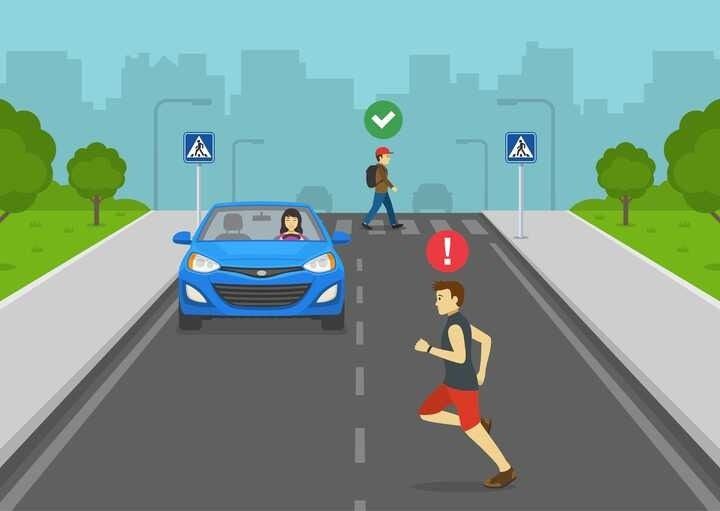
Road safety education is a critical aspect of ensuring safer roads in India. It is important to educate people, especially children and young adults, about road safety measures and the importance of following traffic rules to avoid accidents. By educating people on road safety measures and the importance of following traffic rules, we can reduce the number of accidents and fatalities on Indian roads.
Here are some reasons why road safety education is crucial in India:
1. High accident rates
India has one of the highest rates of road accidents in the world, with more than 1,50,000 deaths and several million injuries every year. The lack of road safety education is one of the key reasons for these alarming figures.
2. High economic losses
Road accidents also result in significant economic losses, including damage to vehicles and infrastructure, medical expenses, and loss of productivity. By educating people on road safety, these economic losses can be minimised.
3. Lack of awareness
Many people in India are not aware of basic road safety rules and measures. This is particularly true in rural areas, where there is little or no awareness of traffic rules and regulations.
4. Importance of early education
It is important to start road safety education at an early age to create a culture of safe driving and road usage among the younger generation.
5. Need for behaviour change
Road safety education can bring about a positive behaviour change, leading to safer driving practices and reducing the number of accidents on Indian roads.
Read More : What to do in case of accident? – 5 Tips
The Bottom Line
In a world where safety on the roads is a top priority, India's new safety norms for cars are a step in the right direction. As of 2024, all new cars will be required to meet these safety standards, which include advanced features such as airbags, reverse parking sensors, and ABS.
While the implementation of these safety norms poses challenges for the automotive industry, it also presents an opportunity for innovation and growth. Consumers must be made aware of the importance of these safety features, and both the government and the industry have a crucial role to play in educating them.
At the heart of it all lies the need for road safety education in India. By promoting awareness and responsible behaviour on the roads, we can reduce the number of accidents and fatalities on our roads. Together, one small step at a time, we can create a safer future for all.
FAQs:
Q. What are the new safety norms for cars in India?
The new safety norms for cars in India include crash test standards for new cars, mandatory safety features such as airbags, reverse parking sensors, seat belt reminders, speed warning systems, Electronic Stability Control (ESC) and Anti-lock Braking Systems (ABS) for all cars, and child safety features such as ISOFIX child seat mounts and rear seat belt reminders.
Q. When will the new safety norms be implemented?
The new safety norms will be implemented in phases, starting from April 2023 for new car models and October 2023 for existing models.
Q. What are the mandatory safety features for cars in India?
The mandatory safety features for cars in India include driver airbags, reverse parking sensors, seat belt reminders for driver and front passenger, speed warning system, and child safety features such as ISOFIX child seat mounts and rear seat belt reminders
Q. What is the potential impact of new safety norms on accident rates?
The new safety norms are expected to significantly reduce accident rates in India, which has one of the highest rates of road fatalities in the world. By making these safety features mandatory, the chances of accidents and injuries will be reduced, and fatalities will be significantly reduced.
Q. What are the challenges faced by the implementation of new safety norms?
The implementation of new safety norms poses several challenges, including cost implications for manufacturers, resistance from consumers who may not be willing to pay for these features, limited availability of certain safety features in lower-priced car models, and challenges in enforcing compliance with the new norms.
Buy recently added cars
Other Blogs
- Recent
- Featured
Popular Cities to Sell Car





